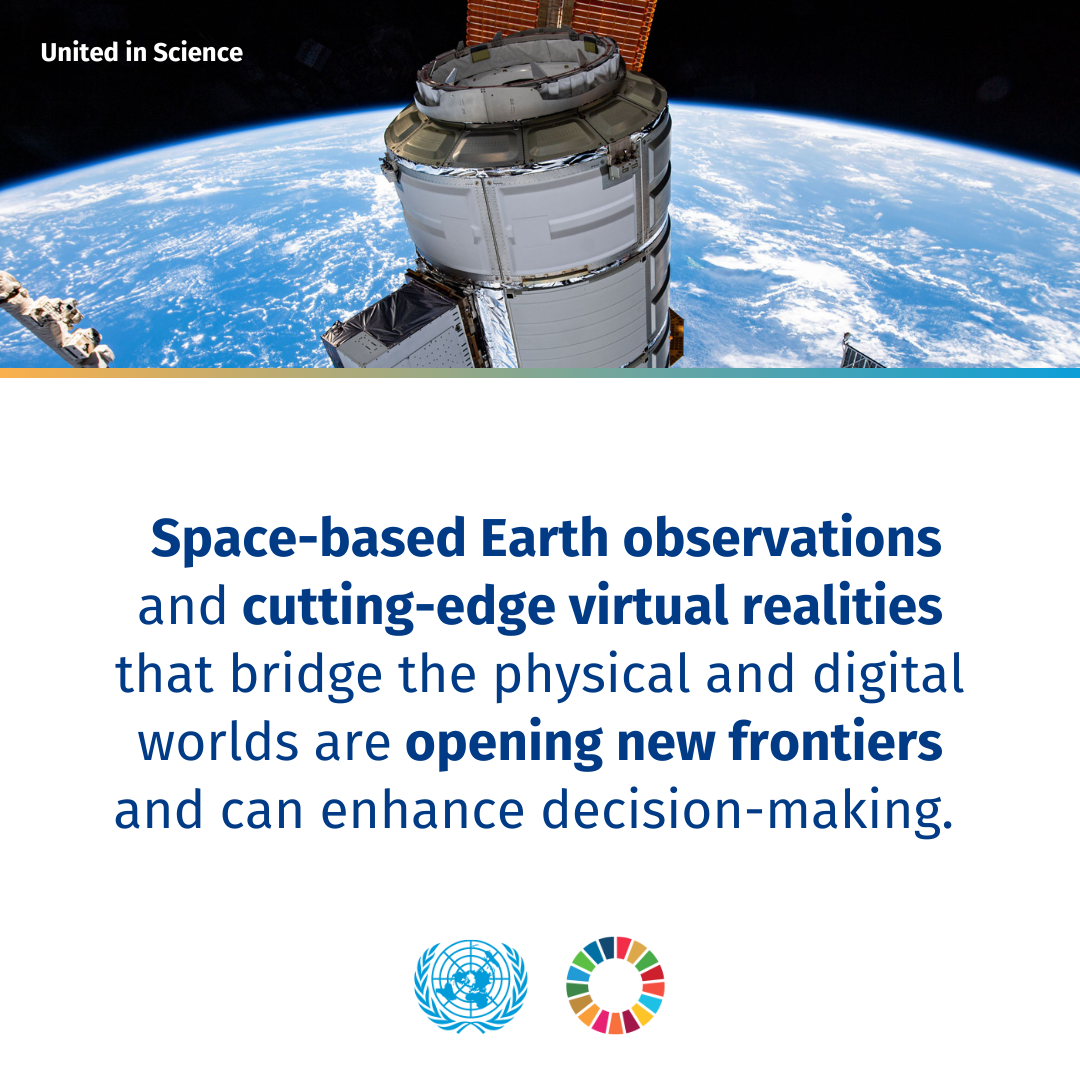In a new multi-agency report, United in Science, coordinated by the World Meteorological Organization (WMO), the United Nations Office for Outer Space Affairs (UNOOSA) underscores in its contribution the critical role of space-based Earth observations in addressing the growing climate crisis. The report highlights that advances in satellite technology have vastly improved the accuracy and frequency of weather forecasts, climate predictions, and environmental monitoring.
High-resolution satellite data is essential for tracking key climate variables such as ocean temperatures, aerosols, and hydrological patterns. These innovations have expanded opportunities for enhanced weather forecasting and climate adaptation efforts. However, challenges remain, particularly in data accessibility and gaps in coverage, especially in sparsely observed regions like the cryosphere.
The report calls for stronger international cooperation and innovative financing to fully harness space-based Earth observations for global climate goals. Public–private partnerships and improved governance frameworks are seen as crucial to maximizing the potential of satellite technology to support weather, water, and environmental applications.
The United in Science report also covers several other critical areas in the fight against climate change. It warns that global greenhouse gas emissions continue to rise, putting the planet on track for up to 3°C of warming by the end of the century under current policies. The report highlights the transformative potential of technologies like artificial intelligence (AI) and machine learning in revolutionizing weather forecasting and climate adaptation. It emphasizes the need for transdisciplinary approaches, integrating both natural and social sciences, and stresses the importance of multi-hazard early warning systems to protect lives and livelihoods from climate-related disasters. The report calls for urgent and ambitious action, including enhanced global collaboration, to close the gap between climate goals and reality.
Find more information and a link to the full report on the WMO website and its press release.


